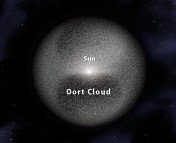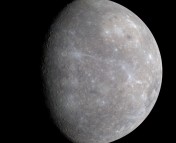Title: Constraining the Interiors of Asteroids Through Close Encounters
Authors: Jack T. Dinsmore, Julien de Wit
First Author’s Institution: Department of Physics, Massachusetts Institute of Technology, Cambridge, MA, USA
Status: Published in MNRAS, Oct 19, 2022
Asteroids, and other small bodies in the solar system are considered an extremely interesting testing ground for theories of our Solar System’s formation. Unlike planetary interiors, which have been processed by high pressures, asteroid interiors are believed to be relatively pristine remnants from the era of the Solar System’s formation. As such, information on asteroid interiors is extremely valuable.
Examining asteroids
The most straightforward way of obtaining data on asteroid interiors naturally is to directly investigate asteroid fragments in a laboratory. This includes asteroid pieces that have come to Earth as meteorites, or samples collected by space-crafts directly. The OSIRIS-REx mission is scheduled to return a piece of the asteroid Bennu in 2023.
While the direct study of samples in a laboratory is certainly ideal, sample acquisition is either extremely costly (via sample return mission), or reliant on the relative randomness of meteorites falling to Earth. Of course, given the devastating effects large meteorites have impacting Earth, we should probably not be terribly sad about meteorite samples being so sparse. Indeed, there is a much larger pool of asteroids that come into close vicinity of Earth, but (luckily) never impact. It is these near-Earth asteroids, on which we can get precise data on when they fly by Earth, simply by observing them with telescopes. However, one would think that this can only give us information about the asteroids’ surface.
Today’s authors challenge this view by proposing an exciting method of how observations of asteroids during close encounters with Earth can lead to constraints on not just the asteroid surface, but also the asteroid interior.
Tides, what they do and what they depend on
The tool that allows us to look into the interiors of asteroids is gravity—more specifically tidal interactions. Tides are a relatively well known phenomena, as tidal interactions between the Earth and Moon cause the sea level to periodically ebb and flow. However, it is not just the smaller body that affects the larger body; Earth also affects the smaller body. For our Moon, this means that the tidal interactions cause the moon to slowly move further away from Earth, at a rate of about 4 cm per year. As a consequence the orbital period of the moon and its angular velocity decrease.

Now, albeit on a smaller scale, yet very similar in principle, tidal interactions also occur when an asteroid has a close encounter with the Earth. During the fly-by, the large mass of the Earth will induce tidal torques on the asteroid thus changing and potentially impacting both its spin angular frequency and its orbital angular frequency. It turns out that the amplitude and the duration of these angular velocity perturbations strongly depend on the asteroid’s interior structure, or more precisely, the asteroid’s moments of inertia. The moment of inertia quantifies what torque (force applied at some lever arm) would be necessary to achieve some desired angular acceleration about some chosen axis. It depends exclusively on the body’s mass and the mass distribution. This means that were we to know exactly how the mass in an asteroid is distributed, we could perfectly calculate how the tides from Earth would change the asteroid’s angular velocity.
Retrieving asteroid mass distributions
Today’s paper’s authors asked the inverse question. Assuming we can observe the change in angular velocity of the asteroid, can we figure out what the mass distribution within the asteroid should be?
The authors developed an algorithm that does exactly that, and tested it using synthetically generated data. Figure 1 shows the true (as in synthetically injected) density distribution in the right panels compared to the density distribution that was recovered in the left panels. The authors find that their algorithm confidently recovers the core structure of the synthetic asteroid, which is promising.

The authors’ algorithm is also associated with limitations. For example, it works best if the asteroid comes very close to Earth, requiring a minimum distance that is less than 18 Earth radii. Moreover, it requires highly precise data on the evolution of the velocity of the asteroid during the encounter. Another consideration is that output density distribution also depends on the model used within the algorithm. For this reason, the author’s compare multiple models (see Fig. 2) and highlight the need for observations of real asteroids to also consider and compare a variety of models.
Tidal theory is a powerful tool in astrophysics, and has seen many successful applications (i.e., understanding exoplanetary systems, investigating the outcome of black holes merging with stars, explaining exotic features in far-away galaxies). Today’s authors add yet another intriguing application: probing the interiors of asteroids during close encounters with Earth. It will be exciting to see when telescopes can measure a visiting asteroid’s velocity data precise enough for today’s paper’s method to be applied to a real asteroid.
Astrobite edited by Suchitra Narayanan




